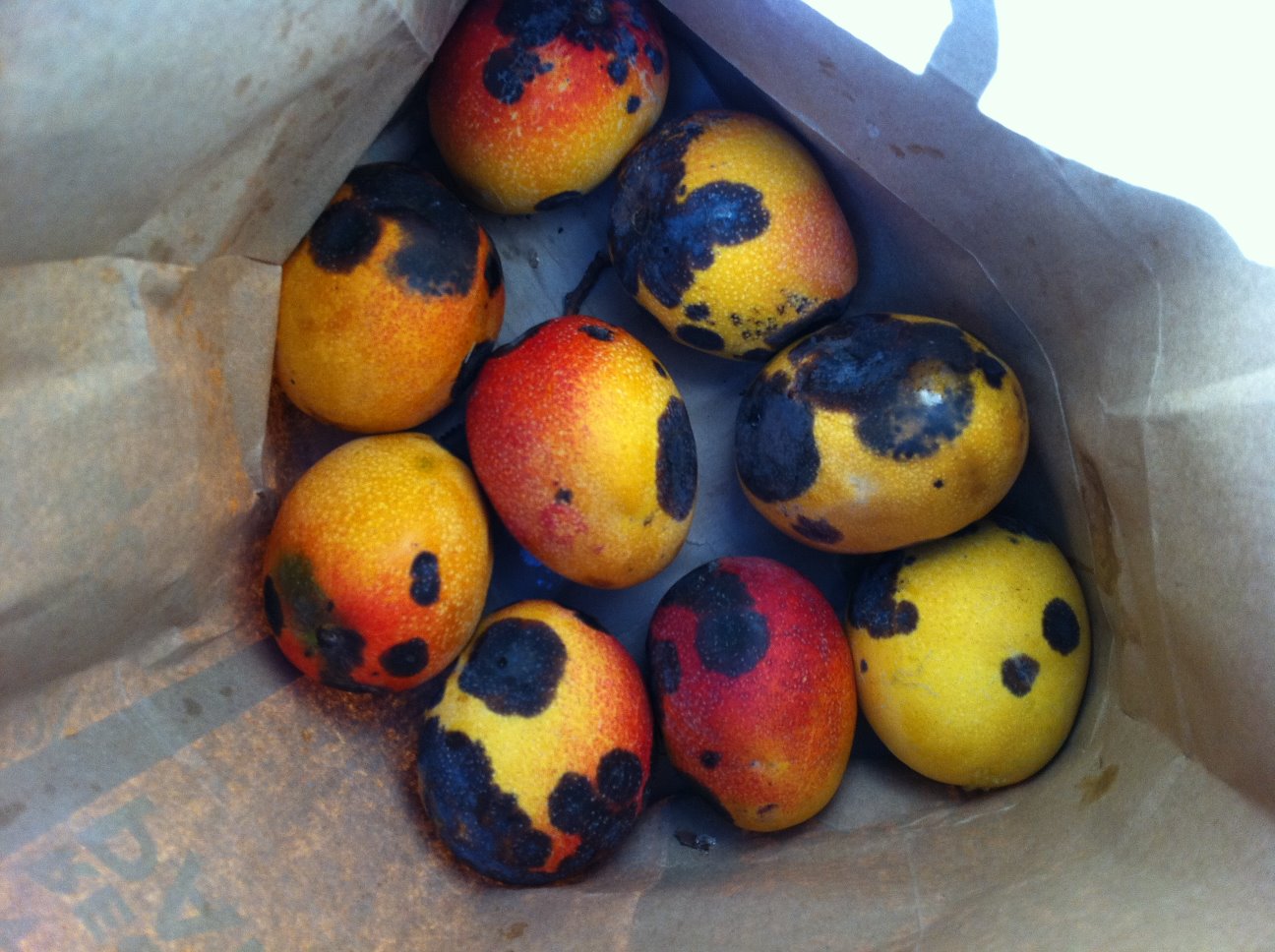Aspergillus niger
As a consolation for those of you who crave mangos and may get jealous seeing my unlimited supply of mangos this season, let me show you a dark side of this story. Life is not always as rosy as one would think it is. In this warm weather of subtropical Miami, we have all sorts of disease breeding insects and nasty microorganisms. They attack everything, including mangos, of course.
The two main diseases of mangoes are anthracnose and bacterial black spot.
Let's talk first about the milder form, bacterial infection, commonly known as the black rot (Ceratocystis paradoxa and Chalara paradoxa.) The bacterial black spot is often called bacterial canker (Xanthomonas campestris pv. mangiferaeindicae.) The spots have water soaked margins and fruit lesions consist of individual or multiple star shaped cracks, often appearing with anthracnose lesions in a tear stain pattern. Unlike anthracnose, bacterial lesions do not expand and spread as the fruits ripen.
The nasty one is anthracnose (Aspergillus niger, a filamentous fungus) which is a fungal disease caused by Colletotrichum gloeosporioides. It is known as black rot , but it should really be called black mold rot, a fungal disease, to differentiate this from its bacterial cousin above.
Anthracnose is usually only a problem in fruits that are ripening, as the fungus remains dormant in green fruits during the growing season. Little people know that when they eat a green mango, they may be ingesting entire colonies of fungi.Now that I am writing this, I am having second thought about my blog of the other day! When the fruits ripen, small dark spots form at first and then enlarge rapidly under favorable conditions, which are plentiful in Miami. Pink spore masses grow on the infected tissue. Such fruit has no market value. You are telling me? The spread is so rapid, all you can do is to get rid of them fast. Most of the time, it's not fast enough for me!
Now, you don't like mangos so much any more, right?



No comments:
Post a Comment